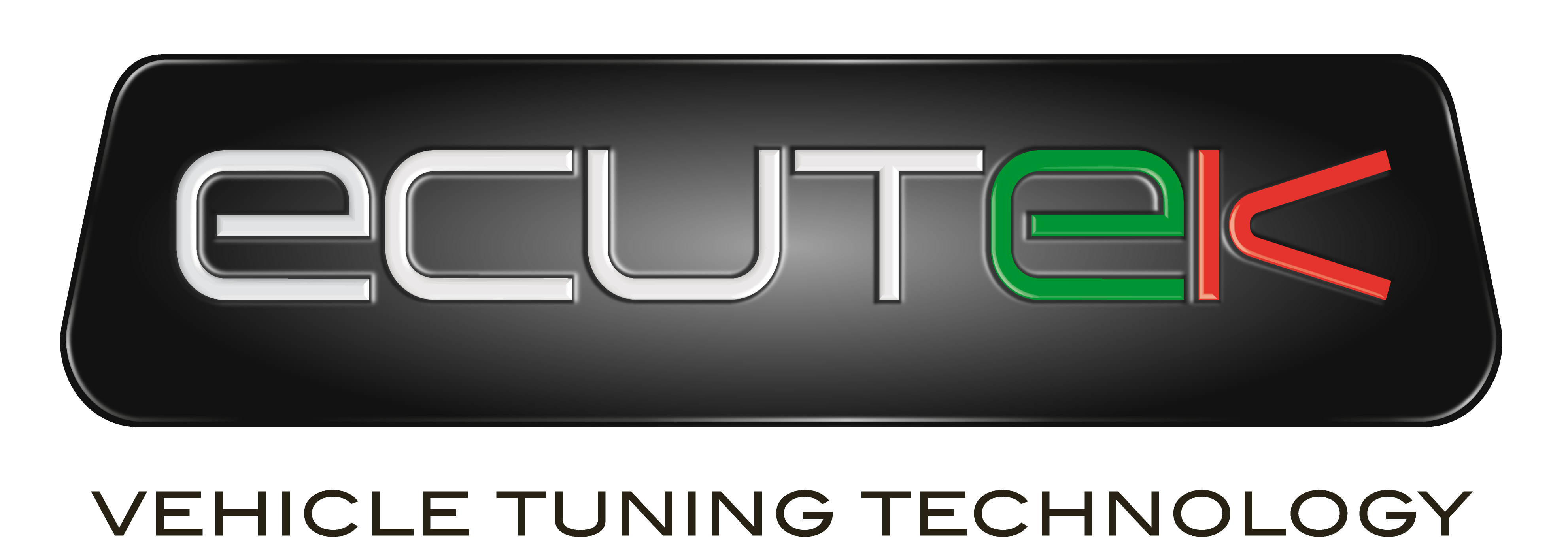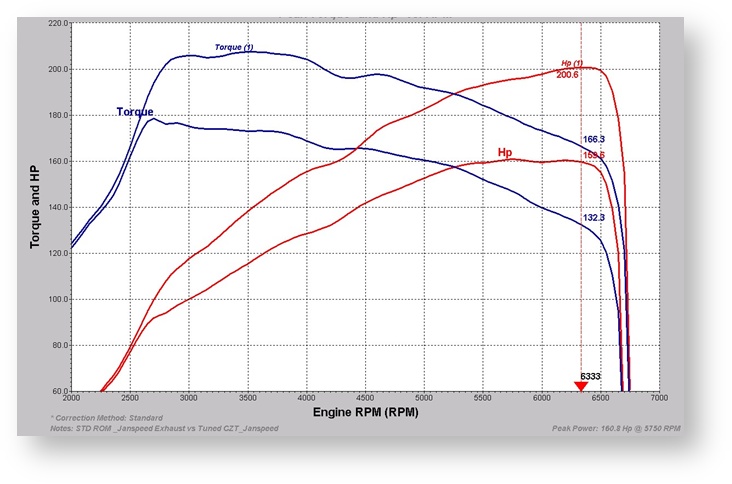Tuning Guide
If trying to tune the COLT CZT on the dyno then the Traction Control will activate making driving difficult. The traction control will become disabled if you drive with a very light throttle up to 5th gear. If the ECU keeps closing the throttle then lift off and reapply, eventually the TC/ABS will error and disable.
Once off the dyno the ABS codes will disappear and Traction Control will work as normal.
Always use CLEAR DTC Function in the programming window after programming.
Always turn OFF the Ignition after Programming or CLEAR DTC function, wait 5 seconds then start the engine.
The OBD2 socket is hidden below the steering wheel behind the lower dashboard. You will need to remove the lower dash cover to access the OBD2 socket.
Make a log file before and after tuning, save the log files with your customers ROM file in a safe place for future reference.
Please note that LIVE DATA will NOT be able to show Engine Load unless you have programmed the ECU with an EcuTek ROM file. Map Access will not work unless you have programmed the ECU with an EcuTek supplied ROM file.
Boost Pressure cannot be shown as no MAP sensor is fitted to the Euro CZT. Wastegate duty cannot be shown either for other uninteresting reasons!
You should start tuning with our Example ROM file found here:
C:\EcuTek\ProECURomFiles\Mitsubishi\COLT\Example_ROMs
Using My Computer or Windows Explorer you will also see an Example Log file in the same EXAMPLE ROMS directory, which can be viewed in DeltaDash, called:
C:\EcuTek\ProECURomFiles\Mitsubishi\COLT\Example ROMs 1860A581 Log file Dyno runs CZT STD vs 200bhp.csv.
It shows a standard ROM dyno run compared to the 200bhp ROM. Engine Load will increase from a Desired Engine Load of 154% to the new Desired Engine Load of 195%
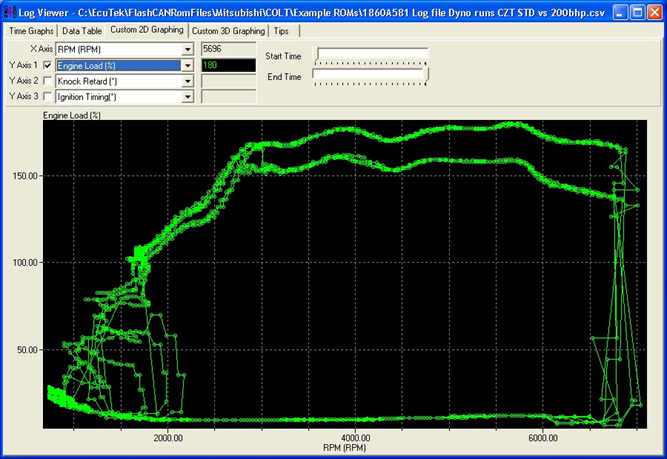
Boost pressure should therefore increase from the factory setting of around 0.6 bar to around 1 bar (Depending on Atmo pressure and Ambient temps). Typical Boost Increase is shown below.
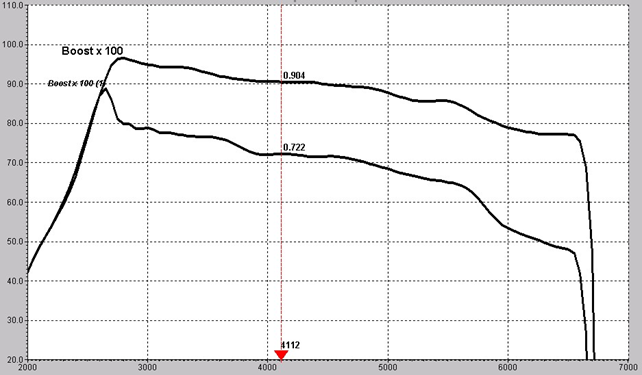
Wastegate duty will now be at maximum 100%, if a higher boost is required then mechanical adjustment of the Wastegate Actuator will be needed.
If fitting an air filter/ Induction kit be sure to check Mass Airflow sensor reading before and after. Most Induction kits will reduce the amount of Airflow actually measured by the AFM and thus reduce the true Engine Load. This will ADVANCE the Ignition timing and LEAN the AFR so take care!! If Engine Load is reduced by more than 5% then increase the 2D AFM Scaling Map accordingly.
The 3D Fuel Injector Compensation table should be adjusted to make Calculated AFR (Main Fuel map) and Actual AFR (measured by Wideband) similar.

For Example, if your Desired AFR from the Main Fuel is 12:1 but you current AFR shown is 11:1 then take -9% from your Fuel Injector Compensation table.
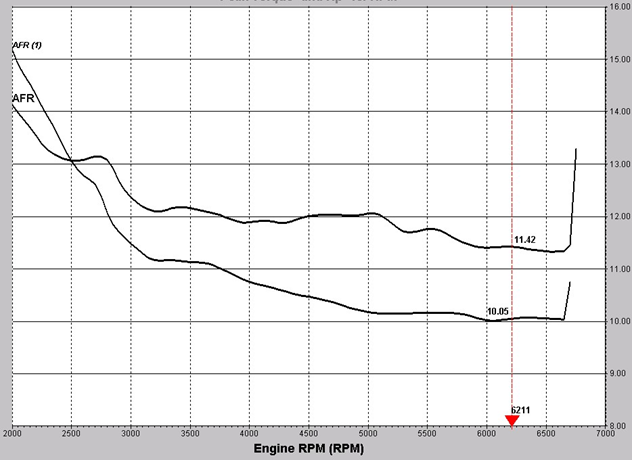
You can import the Innovate LM1 Wideband sensor into your ProECU software.
You will then have LM1 wideband AFR included in all your log files and you can also use the very useful Map Access feature called ‘Colour by Knock’. Innovate LM1 can be used in all EcuTek Software.
We run around 12:1 AFR across the mid range dropping to 11.5 AFR past 5500rpm.
Our Ignition Timing is increased by around 4 deg at high RPM even with 0.3 bar more boost and a lean AFR, it seems quite safe on 95RON fuel as well.
Example ROM changes
Fuel Map High Octane: 12.5 AFR at peak torque dropping to 11.5 AFR past 6000rpm.
Fuel Injector Open Time Compensation: Optimised to keep Fuel Map target values accurate.
Ignition Map High Octane #1: Ignition Advanced for better engine performance below 60deg C (when VVT is not working).
Ignition Map High Octane #2: Ignition has been advanced and optimized for 97 RON fuel.
Ignition Map Low Octane #2: Ignition has been retarded for further safety when knocking occurs.
VVT Map: Cam Advance has been slightly extended around 5500rpm.
Initial Wastegate Duty #1 - #2: Increased to make a higher boost pressure.
Desired Engine Load #1 - #2: Increased to target 195% Engine Load (including the Boost Offset Value).
Boost Limit: Increased to avoid fuel cut / boost limit, 25% above target Engine Load value.
Turbo Dynamics: Reduced values to overboost prevent aggressive correction and unstable boost.
Boost Control - Desired Engine Load Offset: Raised to 35% to take total Desired Engine Load to 195%.
Calculated Torque #1 - #3: Slightly Increased for the higher power output.
Torque Demand #1 - #6: Slightly Increased for the higher power output.
Trustful Check for TPS P1962 P0223 #1 - #2: Slightly Increased for the higher power output.
Trustful Check for Torque Monitor P1966 #1 - #4: Slightly Increased for the higher power output.
Torque Limiting Low and Drive: Values raised to allow a higher torque at part throttle conditions.
Open Loop Load A and B: Values raised to maintain closed loop conditions in a higher engine load situation thus improving fuel consumption.
Trustful Check for Max Engine Load: Raised to avoid CEL condition at 200% Engine Load.
